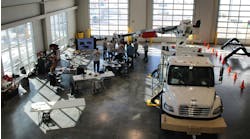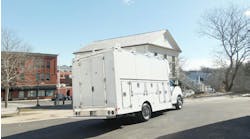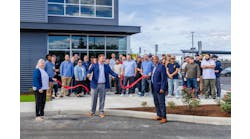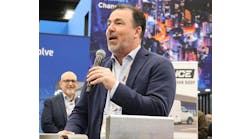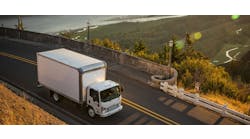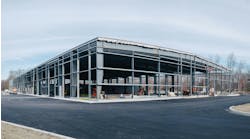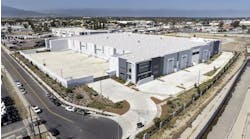Like any business in a grow-or-die competitive environment, the team at Mickey Truck Bodies was looking for ways to increase production at its High Point, North Carolina headquarters. Between the rapidly growing number of truck orders and the increasing variety and complexity of truck equipment accessories, Mickey identified its liftgate installation process as an ideal opportunity, and also identified the highly skilled team of installers as being qualified and capable for a wide range of projects.
And now, a little more than a year after Mickey completed its new liftgate installation facility, executives, managers and shop personnel share the same impression: How did they manage before?
“I don’t think there’s anybody in the industry that can compete with us on liftgates and alarms [installation] right now,” says a clearly proud Clay Hall, liftgates manager. “We’ve got the best liftgate installers in the country.”
The 20,000-sq-ft liftgate installation facility is located on a 13-acre site that’s now part of Mickey’s manufacturing complex. It houses a total of 15 bays for liftgate installations and chassis preparation. Liftgates are one of the most popular accessories on Mickey’s truck bodies, and Mickey is an authorized installer for all major liftgate brands.
The facility, which is turning out about 70 liftgate bodies a week, has the capacity to do 100 “easy,” Hall says. That’s a nice improvement from the previous liftgate installation area in the main facility, where 50 liftgates a week was the absolute maximum.
“When I came here 19 years ago, I started off putting on liftgates,” Hall explains. “Everything was just liftgates and bumpers. Now, every truck has many, many options: Liftgate, rail gate, header kit, stirrup step, tool boxes—all kinds of stuff.”
To illustrate, he shows a truck with a solar panel being installed on the roof.
“Before, when we got a chassis in, we put the mounting wood on and sent it straight to the liftgate area after we mounted the body,” Hall says. “Today, we do a lot more right here: We put the chassis extensions on; we put all the wiring on; we do all the alarms; we do the solar panels, the generators—anything that’s a special option.
“Anything on the chassis, that’s got to go from the cab to the back, we do it all right here. You can do a much nicer job, with much better quality, than crawling around under there in the dark after the body has been put on. This is 10 times faster.”
He also cited alarm installations: A job that used to take 20 hours can now be done in four, and done better.
Earlier in his career, liftgate assemblies arrived in pieces and had to be put together in the shop—making for a 10-hour install, Hall notes. Now liftgates arrive largely pre-assembled, and credited liftgate suppliers for “stepping their game up.”
Efficiency by design
Everything about the new liftgate facility is geared toward improving efficiency.
“Every time you move that vehicle, it costs you money,” Hall says. “Every time you take a step out [of the production process], that saves you money.”
Among the highlights of the new facility, Hall notes that each bay is set up for both steel and stainless steel welding.
“In the old facility, if we went from steel to stainless we’d have to change the wire or change the gas,” Hall says. “Now, every bay is already set up. And every bay has a plasma torch and an acetylene torch. Our whole concept for setting it up is we didn’t want that guy leaving his bay to walk outside to get parts or anything else. Everything he needs is pretty much in that bay. All he’s got to do is put liftgates on.”
Indeed, just outside the shop doors is the liftgate staging area. Hall says the substantial stock on hand is all “bought and paid for” and schedule for installation.
“For next week, I’ve already looked: We’ve got this, we don’t have that,” he says. “But usually we’re not waiting on anything.”
Custom carts, designed and built by the liftgate facility team, are used to shuttle parts kits from the staging area—where the parts are removed from the packaging and organized by work order—to the bay where the job is scheduled.
“When you get down to doing work in five bays but you need seven, you’ve got to come up with some more ideas,” Hall says, explaining that the carts preceded the new facility. “It worked so well we just keep using it here. When you calculate all the time we’re saving, it’s like having an extra liftgate bay, maybe two bays, every day. It speeds it up that much.”
A worker is assigned to the load the carts, as well as other duties around the yard.
“You don’t want a welder spending his time doing things other than welding,” he adds.
He also points to an extensive ventilation system, both for the welding environment and for hot, humid days down south.
Variety
A range of work can be found on the shop floor.
Hall takes the time to show a wiring harness, noting that Mickey for years had custom built harnesses for its installs. In the last decade, however, the industry has made the transition to plug-and-play wiring systems. And that’s been a change for the better, he notes.
“I’m confident I could build you a compatible wiring harness today, but that guy you just hired off the street he might make a mess of it,” he says. “And the problem is, when he does it and shrink wraps it and puts it under the truck, I don’t get to see it or inspect it. I can’t watch every connection. Now, if there’s a problem, I can usually identify it over the phone, and it’s just a matter of replacing that particular harness.”
Still, Mickey upgrades the wiring for improved reliability.
“All of our wiring is in looms. All of our power cables for the liftgate get a double loom,” Hall says. “If you look back on warranty, normally one of your biggest issues will be wiring. A light goes out, that’s a big deal for a customer—he’s probably going to have to park that truck until he can get somebody out there to fix it.”
Solar panels are being installed on another body. The solar panels mean that auxiliary batteries are required. Additionally, for a rental truck fleet customer, the liftgate systems include a voltage tender to ensure that the liftgate operator doesn’t run down the battery below the charge needed to start the truck.
“If a guy leases a truck, then has to call in for service to get it started, that’s going to cost him money. They [the rental fleet] found out quickly they had to eliminate that problem,” Hall says. “If a guy drives a truck every day, he doesn’t need that. But these guys renting a truck once, they just don’t know.”
In another area, Hall shows off beverage delivery trucks bound for Canada that are being equipped with a Mickey-designed heating system to prevent loads from freezing in extreme cold. “I think it’s going to be big,” he says.
The shop also is where vehicles are sent for quality control fixes, and one bay is just for bumper installs. “All our liftgate guys can put on a bumper,” he adds.
Most liftgates installed at the facility are bolted onto the mounting plates, allowing for the liftgate to be easily removed and remounted if the truck is taken out of service after an accident, for instance; or removed and replaced if the liftgate wears out.
Hall credits liftgate manufacturers for establishing uniform bolt patterns, simplifying installation and repair.
Improvement
Indeed, communication with suppliers is a big part of Mickey’s success, explains Executive Chairman Dean Sink.
“We had several customers come in and say it’s the best liftgate facility they’ve ever seen,” Sink says, and he credited Maxon for helping with the design. “We collaborate with them on how to get better and better, but also we can make their product better because our guys can give them tips on how the installs are going. So it’s working out very well.”
At the opening, Sink explained how the liftgate facility fits into the big picture and the future of Mickey Truck Bodies.
“We are very excited about the growth and opportunities the new liftgate facility offers. Grow or die. That’s always been the mantra of successful businesses,” Sink said. “At Mickey, our record of growth over the past several years has been the result of the 3 Ps: growth through people, growth through products and growth through places. Mickey continues to grow through all three areas and we want to celebrate our past and future success with the teammates who make that possible through hard work and dedication every day.”
Hall again praises the liftgate team.
“We’ve got some smart people over here—they make me smarter,” he says. “Sometimes you have to be here a while to know the whole system, but we’re a lot more than just ‘liftgates’ anymore.”
For more info: Mickey Truck Bodies

